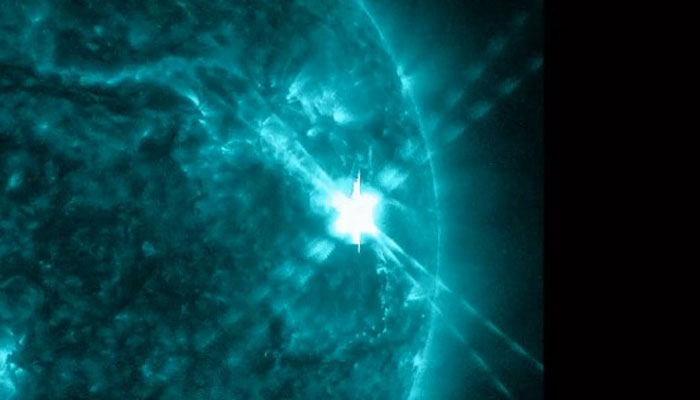Largest solar flare since 2017 disrupts radio communications with airplanes
An increase in solar activity has been linked to Solar Cycle 25's peak, which is anticipated to occur in 2024
December 15, 2023

Nasa on Thursday revealed that a massive solar flare erupted on the Sun, releasing a considerable amount of radiation energy which was also recorded on video by a spacecraft, Fox News reported.
The space agency released images of the solar flare, which is considered to be the largest one since September 10, 2017, according to the National Oceanic and Atmospheric Administration's (NOAA) Space Weather Prediction Center (SWPC).
The intensity of this solar flare is reported as an X2.8, which is one of the most intense events and sends a burst of radiation towards Earth.
Flares are classified based on their strength, with the smallest being the B-class, followed by C, M, and finally, X-class. Within each category, numbers are assigned to the events that help determine their scale.
Therefore, the 2.8 is on the low end of a strong event. Interestingly, the strongest solar flare in recorded history is believed to have been an X45, which occurred in 2003. Most X-class events rank between 1 and 9.
SPWC said the most recent event was strong enough to cause some high-frequency radio blackouts on Earth and federal agencies described the event as "one of largest solar radion events ever recorded".
They even said there was significant radio communication interference with aircraft.
It is known that spacecraft, electrical grids, and communications equipment are all impacted by solar flares and other solar eruptions.
Meanwhile, there have been no reports of any anomalies on the International Space Station thus far. A scheduled SpaceX undocking was delayed but it was due to the weather on Earth, not in space.
An increase in solar activity has been linked to Solar Cycle 25's peak, which is anticipated to occur in 2024.
SWPC officials said Thursday's flare is also the largest detected this solar cycle. The overall strength of the cycle is expected to be generally weaker than average but more significant than what was experienced during previous solar events.









